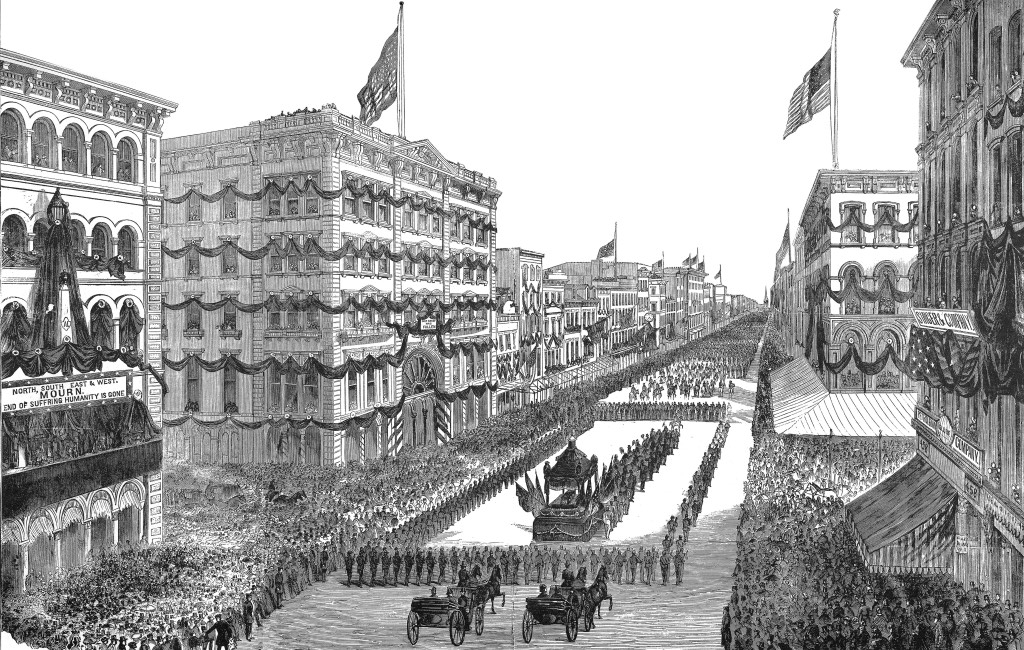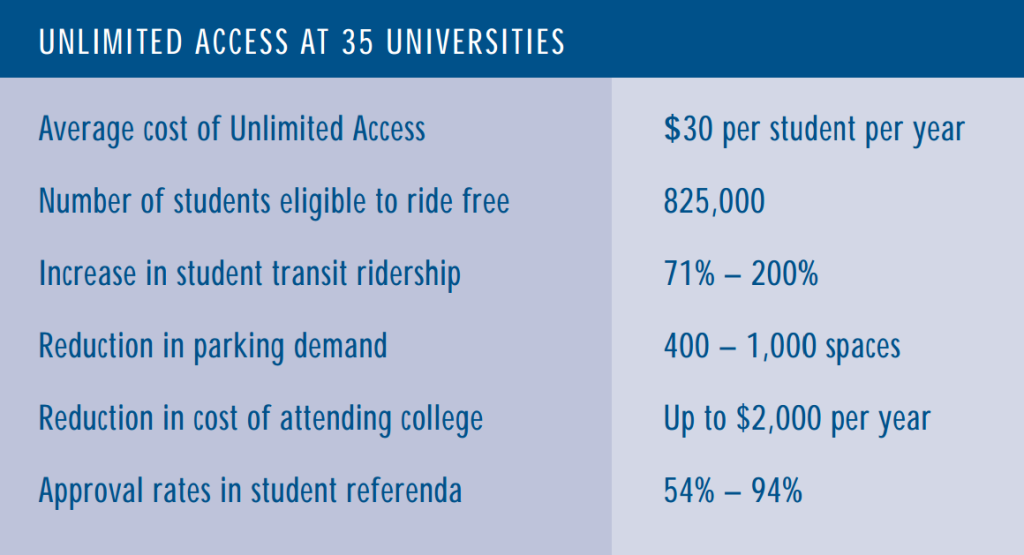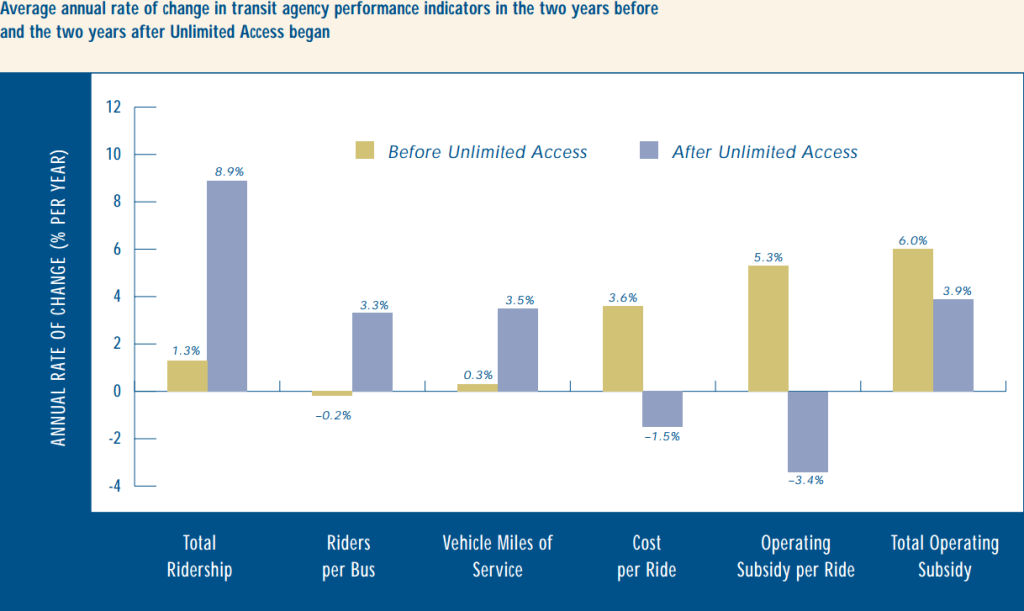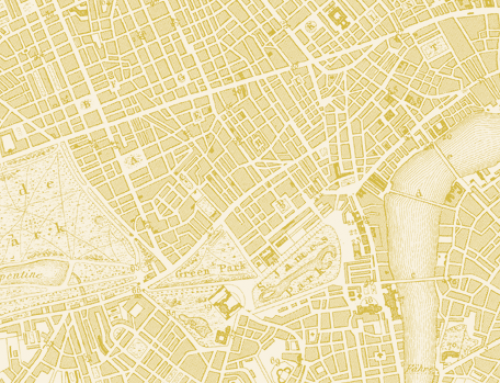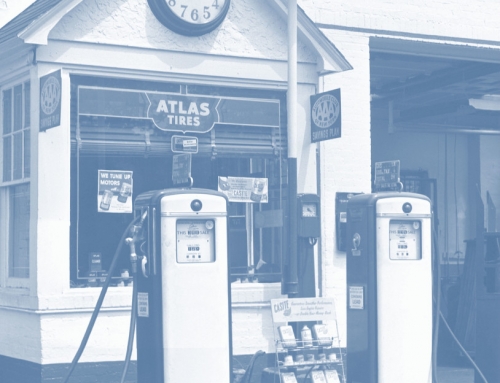[sharelines]Giving free transit to university staff and students gives transit a major ridership bump.
Imagine a transportation program that increases transit ridership, reduces traffic congestion, saves energy, cleans the air, and costs very little. Many American colleges offer such a program, and they have given it a variety of names—such as BruinGO, UPass, ClassPass, and SuperTicket. We refer collectively to these programs as Unlimited Access.
Unlimited Access turns student identification cards into public transit passes. The university pays the transit agency an annual lump sum based on expected student ridership, and the transit agency accepts student identification cards as transit passes. For every student on any day, a bus ride to campus (or anywhere else) is free. Unlimited Access is not free transit, but is instead a new way to pay for transit.
To learn how Unlimited Access works, we surveyed 35 universities that offered it during the 1997–1998 school year. We found that the average cost of Unlimited Access was $30 per student per year, and that 825,000 students at the 35 universities were eligible to ride free. Unlimited Access encouraged some students to shift from cars to public transit for their trips to campus, and student transit ridership increased between 71 percent and 200 percent at different universities. At one school the number of vehicle trips to campus decreased by 26 percent. The reduction in vehicle trips reduced parking demand by 400 to 1,000 spaces. Because Unlimited Access allows students to get around without a car, the university financial aid budgets suggest that it can reduce the cost of attending college by up to $2,000 a year.
If student fees are increased to pay for Unlimited Access, the students must approve this arrangement in a referendum. The approval rates in these referenda ranged from 54 percent to 94 percent, and the yes votes typically increase in subsequent referenda as students get to know the programs.
Unlimited Access is a good bargain for universities and students, but is it also a good bargain for transit agencies? To answer this question, we examined the transit agencies’ rates of change in total ridership, riders per bus, cost per rider, vehicle miles of service, operating subsidy per rider, and total operating subsidy before and after Unlimited Access began. The first three panels of the bar chart suggest that Unlimited Access improves transit performance: it increases total transit ridership, fills empty seats, and improves transit service. The last three panels suggest that Unlimited Access reduces transit cost: it reduces the operating cost per ride, reduces the operating subsidy per ride, and reduces total operating subsidies.
Few transportation reforms increase mobility and reduce vehicle trips. Unlimited Access increases mobility by giving students free access to public transportation, and it reduces vehicle trips by shifting some travelers from cars to public transportation. Unlimited Access is a creative, inexpensive way to take advantage of the excess capacity on public transit. Nearly three-fourths of all seats on American public transit are now empty, and transit agencies have found a group eager to buy this excess capacity—university students. Unlimited Access programs serve less than 6 percent of the 14 million students enrolled in American universities, so the opportunity for growth is enormous. Unlimited Access is a promising innovation with great potential.

